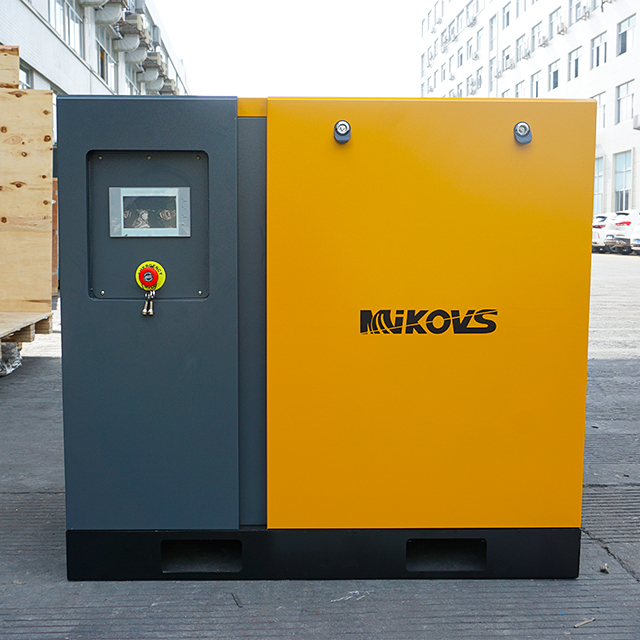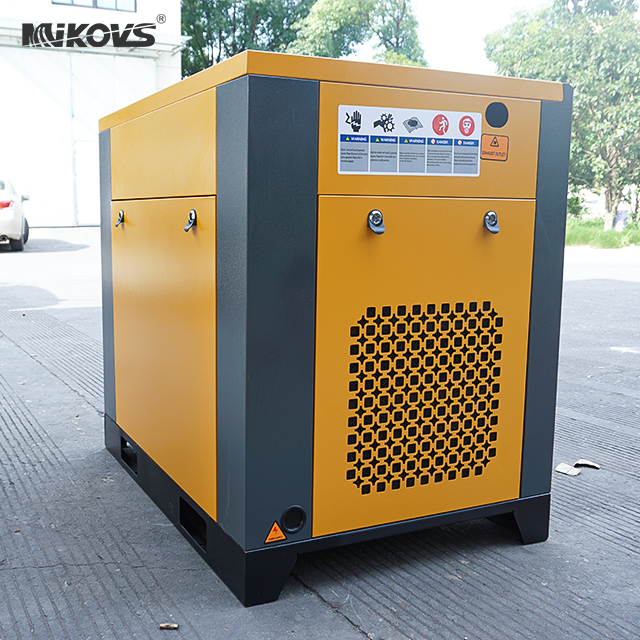In order to manufacture as many PET bottles as possible in the shortest possible time, every part of the production process must run smoothly, including the PET air compressor system. Even small problems can cause costly delays, increase cycle times or affect the quality of PET bottles. High pressure air compressor plays an important role in PET blow molding process. Hitherto it has always been delivered to the point of use (i.e. the blow molding machine) in the same way: a central PET air compressor (either a high-pressure compressor or a low- or medium-pressure compressor with a high-pressure booster) placed In the compressor room, the compressed air is delivered to the point of use through high-pressure piping.
Centralized” air compressor installations. In many cases, especially when only low or medium pressure air is required, this is the preferred approach. The reason is that for countless A fully decentralized setup with decentralized air compressors at all points of use is not a viable option.
However, the centralized setup and air compressor room design has some costly disadvantages for PET bottle manufacturers, especially as the blowing pressure continues to decrease. In a centralized system, you can only have one pressure, determined by the highest blowing pressure required. In order to cope with different blowing pressures, a spread setting is a better choice. However, this would mean that each decentralized unit would have to be sized for each application’s maximum traffic. This can lead to very high investment costs.
Centralized vs. decentralized compressor installation, why not choose a hybrid solution?
Now, there’s a better, cheaper hybrid solution too: part of a decentralized system. We can provide mixing system installations with boosters close to the point of use. Our boosters are specially designed for this application. Conventional boosters vibrate too much and are too loud to be installed near blow molding machines. This means they would violate noise standards. Instead, they have to be housed in expensive soundproof compressor rooms. They can operate at low noise and vibration levels thanks to their acoustic enclosure, frame and cylinder arrangement to keep vibrations to a minimum.
This hybrid system places a low or medium pressure PET air compressor in the central compressor room and places a booster close to the blow molding machine, which generates the required high pressure up to 40 bar.
Therefore, high-pressure air is only produced where it is needed by the blow molding machine. Each high-pressure application gets the exact pressure it needs (instead of customizing a high-pressure flow for the application with the highest pressure requirements). All other applications, such as general pneumatic equipment, will get low pressure air from a central compressor room. This setup can significantly reduce costs, starting with the reduction of high-pressure piping.
What are the benefits of mixing air compressors?
In a hybrid setup, you don’t need long, expensive piping because the high pressure air no longer has to come all the way from the compressor room. That alone will save you a ton of money. This is because high pressure piping is made of stainless steel in most cases and is therefore very expensive. In fact, depending on the location of the compressor room, those high pressure pipes could end up costing as much, if not more, than the PET air compressor itself! Additionally, the hybrid approach reduces your construction costs because you don’t need a large or second compressor room to house your booster.
Finally, by combining a booster with a variable speed drive (VSD) compressor, you can reduce your energy bills by up to 20%. Also, lower pressure drop in your compressed air system means you can use smaller, less expensive compressors that consume less energy. This will of course help you achieve your environmental and sustainability goals. Overall, with this setup of a hybrid PET bottle plant, you can significantly reduce your total cost of ownership.
Total Cost of Ownership of PET Air Compressors
For traditional compressors, the total cost of ownership (TCO) includes the cost of the compressor itself, energy costs and maintenance costs, with energy costs accounting for the majority of the total cost.
For PET bottle manufacturers, it’s a bit more complicated. Here, the real TCO also includes construction and installation costs, such as the cost of high-pressure piping, and the so-called “risk factor”, which essentially means the reliability of the system and the cost of downtime. The lower the risk factor, the less likely production disruption and lost revenue will be.
In Atlas Copco’s hybrid concept “ZD Flex”, the use of ZD compressors and boosters provides a particularly low actual total cost of ownership as it reduces not only installation and energy costs but also the risk factor.


